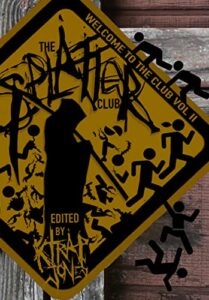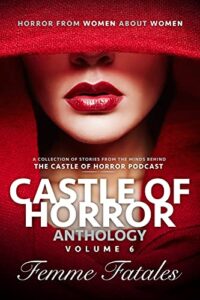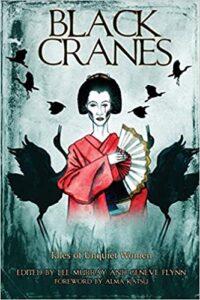Welcome to the Splatter Club, Vol. 2, by various authors, edited by K. Trap Jones
Blood Bound Publishing, 2021
ISBN: 9781718170278
Available: Paperback, Kindle edition ( Bookshop.org | Amazon.com)
If you are tired of the “same old, same old” with horror stories and are craving something original, Welcome to the Splatter Club vol.2 is your passport to madness and mayhem of the highest order. Want a good dose of blood and pain, such as someone getting their balls smashed with a hammer? You got it. How about really weird erotica, straight out of freaky-deaky sex land? It’s in here. Best of all, if you want truly original stories that are so off the wall they make mind-bending substances seem like a good idea, then you need this book. It’s the best, wildest collection I’ve come across in a couple of years. Kudos to editor K. Trap Jones: he clearly knows how to pick ’em.
The overall story quality is exceptionally strong: there’s only one dud out of thirteen stories. The rest graded an average of B+/A-, with one C+ and five solid A’s. About the only unifying themes are taking an ordinary situation and making it beyond strange, and there are a few revenge stories of sorts.
In “War of the Wildflowers”, two apartment neighbors are squabbling. Sounds standard, but one of them has a fishbowl for a head, and the two fish inside provide eyesight for the human. The story has real sadness built into it, and is the closest you get to a tearjerker in the book.
In “The Sack Cutter”, a young lady has the guy who used her and tossed her aside captive in a deserted cabin. Contrary to the story title, this is NOT the usual “physical torture for revenge” plot. The lady has a much more clever and less physically painful idea in mind to make him pay. The story also does a nice job blurring the lines between vengeance and a desire to help improve people.
Take the opening scene from the movie Natural Born Killers, and substitute in crazed vegetarians who want to make a statement and get their 15 minutes of fame, and you have the basic story of “Hell Comes to Burger Hut”, a cautionary tale about how far people will stoop to become social media darlings.
“Igloo Made of Flesh” is possibly the strangest two pages ever written. A city apartment with an Eskimo who grinds up people to make igloo blocks? Yes, you read that correctly.
In “The Long Winter Ahead”, two buddies on a cross-country trip run into the world’s weirdest cult in a hicktown bar. How many stories feature guys having forced sex with trees animated by spirits? This is a very unusual take on the Gaia mythos.
If that isn’t enough, there are also lycanthropes, undead pizza parlor owners, and flesh-chomping gators hopped up on meth. Need I say more? Bottom line: for horror fans, this collection is a can’t miss.
Highly recommended.
Reviewed by Murray Samuelson







Follow Us!